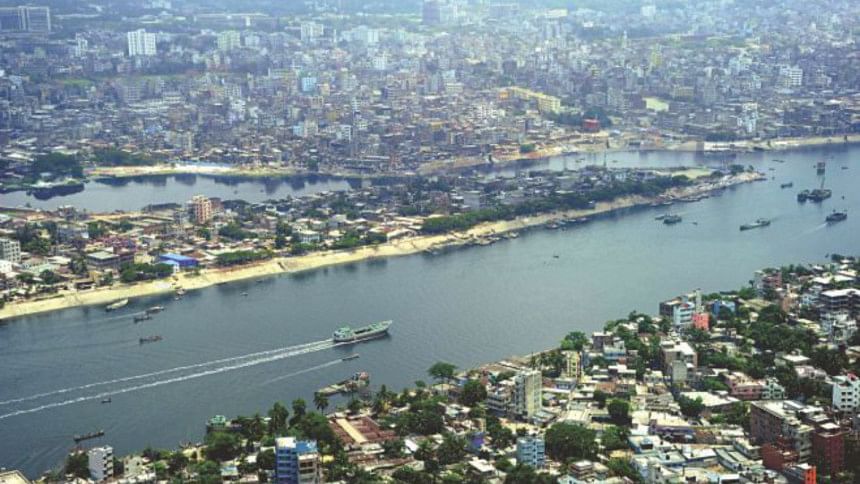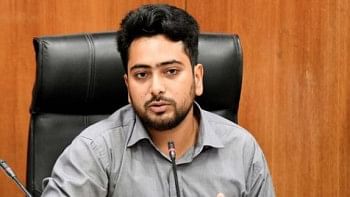Can elected mayors save the city's water bodies?

THERE is a close link between economic growth, human development and good management of natural resources, mainly water bodies and forests. Unfortunately, socio-economic development appears threatened by environmental degradation through polluted water and extinction of forests.
Cities are measured on the basis of political and social stability, access to healthcare, natural environment, education, and the standard of infrastructure including public transport. Some mayoral aspirants in the city corporation polls race have also promised to curb corruption and bring about improvements in traffic congestion apart from taking measures to control the pollution of rivers and lakes around the city. Undeniably the river Buriganga and other water bodies as well as removing illegal encroachments of the rivers and river banks are central to planning a clean city.
In the run up to the city corporation elections, mayoral aspirants are promising everything on earth to rid the city of all the ills and restore it to its past glory. They are definitely aware that overburdened by a burgeoning population and attendant civic problems, the city of Dhaka has become unwieldy and hard to live in. Between 1980 and 2014, the population of Dhaka has swelled from 3 million to more than 14 million. From a somewhat laidback, sober city in the past, this capital turned into a thriving, bustling business centre and a crowded metropolis as well.
But despite the importance the city has received, its basic amenities have not kept pace with the changes. The citizens of Dhaka city are tired and weary. They are tired of passing though a city in which there are stewing, festering, garbage dumped on the roadside, and along the footpaths. And they are weary of travelling along the pitted roads. The city is now a hell-hole. Overpopulation, disease, litter, water shortage, and contaminated water have all played a part turning this once beautiful city into a teeming urban jungle.
The dissolved oxygen in the river Buriganga is well below 5mg per litre, the minimum requirement for the survival of aquatic life forms. The river receives an estimated 12.5 lakh cubic metres of sewage out of 13 lakh cubic metres generated by the city corporation. About 200 tanneries, most of them located at Hazaribagh pump about 21,000 cubic metres of hazardous waste. The Tejgaon industrial area offloads about 60 thousand cubic metres of polluted liquid waste into the Buriganga every day.
In most localities household drains connect to the sewer pipes, which also collect surface garbage. Consequently, the entire untreated mess drains into the river. The result: the water of Buriganga is not even fit for treatment now. Contaminated even further by oil from barges and vessels, the river is so polluted that cleansing by surging rainwater has become almost impossible.
According to statistics of Bangladesh Water development Board, the ground water level in Mirpur dropped by 53.75 metres, 18.59 metres in Mohammadpur and 37.4 metres in Sabujbagh between 1991 and 2008. It means that Dhaka is not only losing ground water fast but also subsiding gradually since the vacuum created by extraction does not get adequate recharge. As a result, the city might face disastrous consequences in case of a major earthquake.
Neither the past city mayors nor the BIWTA nor Dhaka WASA were concerned about the fate of the river Buriganga that once supplied piped water through treatment. The biggest onslaught has come from the river banks and the river itself. Hundreds of acres of riverbeds have fallen into the hands of encroachers. These banks have allegedly been encroached under an alliance of officials and land grabbers. If such shady deals continue to haunt the country even under the present government, which assumed power with firm pledges to bring about changes in the political culture, and the prevailing ill practices, then Turag, Balu and Buriganga will surely disappear.
In the present setup, the city mayors do not have any power or authority to affect or implement any development programme on their own, even when it becomes an emergent public necessity. The creation of a single authority or a supreme coordinating body comprising experts invested with authority from all such organisations has long been overdue.
Let me cite an instance of one such faltering development plan. Rajuk is invested with the authority or power for recovery or reconstruction of decrepit city water bodies because it is the owner of city land space. Rajuk received a DPP for recovery of the Uttara Lake involving Tk 38 crore approved by the Ecnec in May 2014. However, in the first phase of their work they stumbled to prevent polluted water from being discharged into the lake from the drains constructed by DCC. This is because waste water discharge into the lake has to be stopped before excavation work for removing sludge from the bottom of the lake can start. Rajuk needs the permission of WASA for either stopping or reversing the discharge of waste water into the lake and approval of the DCC for cutting roads to lay a few feet of pipes and connect them to the nearest storm sewer pipes laid in Uttara.
Surprisingly, Rajuk was sitting idle over the project so long for reasons best known to them and now, because of pressure from citizens, it has asked for DCC (North) and WASA's permission after about a year of the Ecnec approval of the lake project. Nobody knows when such permission will be available.
Incidentally, Rajuk is not accountable to citizens but elected mayors of the city corporations are. In such a situation, the elected mayors must sit with the prime minister to devise ways and means so that they can run their city cleaning and beautification programmes uninterrupted.
The crisis of governance is marked not only at the Rajuk or city corporation levels, but it extends far beyond that. The constitution ensured regular mayoral elections to all urban bodies, but no election in DCC was held during the last eleven years. This is the main reason that performance or civic amenities and services didn't improve. Whereas urban governance demands a coherent, coordinated and vibrant setup, our cities have been saddled with fragmented authorities incapable of tackling core problems.
If under inspiring urban leadership and vision, the water of the Buriganga once again sparkled in its former glory, if the banks could be cleared of illegal encroachments, if a green vista had developed along the riverfront and if the trade and industry including the Hazaribagh tannery had been relocated, Dhaka would not have only regained its glory but also emerged as a thriving and a dynamic centre of modern civic life. It would have become a symbol of a resurgent Bangladesh. Now, in absence of a vision, Dhaka has lapsed into a beehive of filth, congestion and urban blight.
The writer is a columnist of The Daily Star.

 For all latest news, follow The Daily Star's Google News channel.
For all latest news, follow The Daily Star's Google News channel. 



Comments